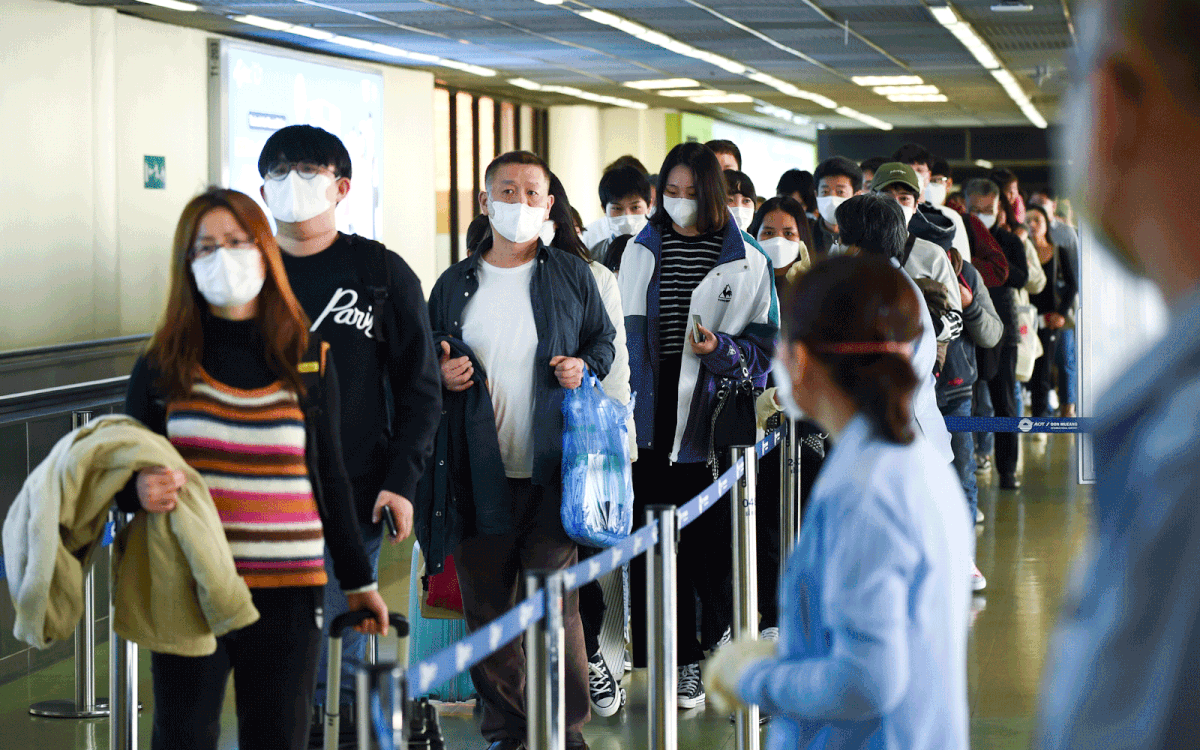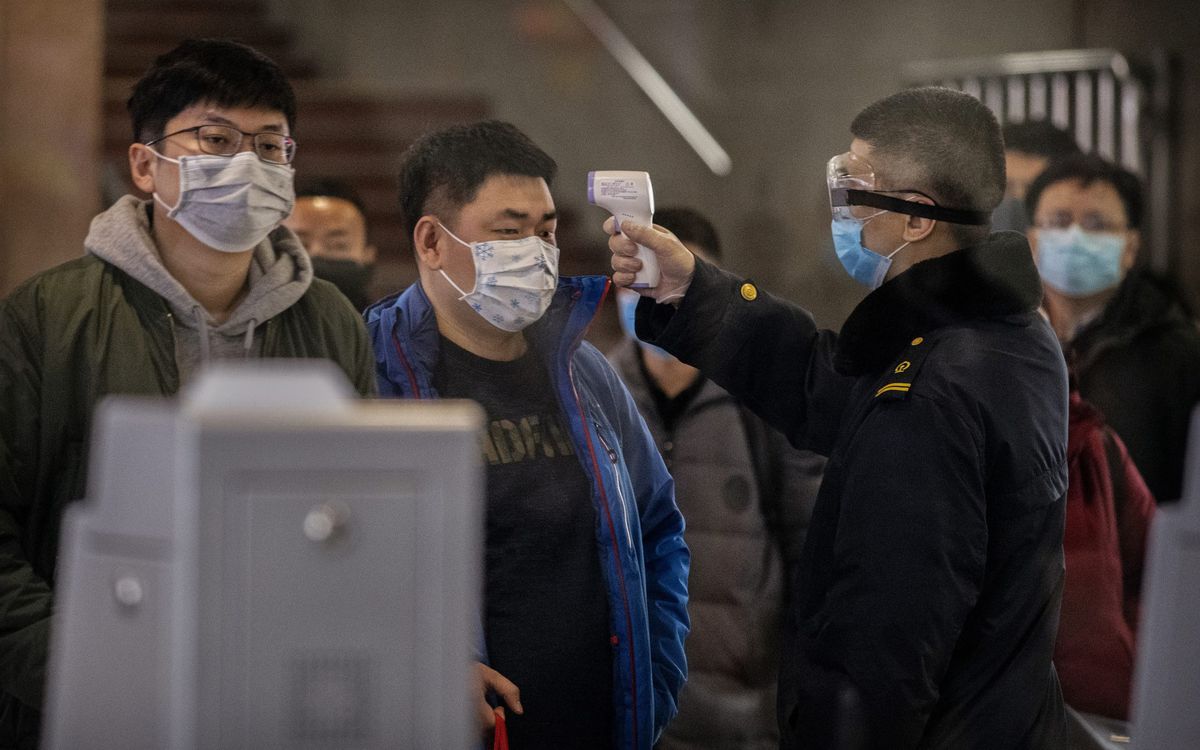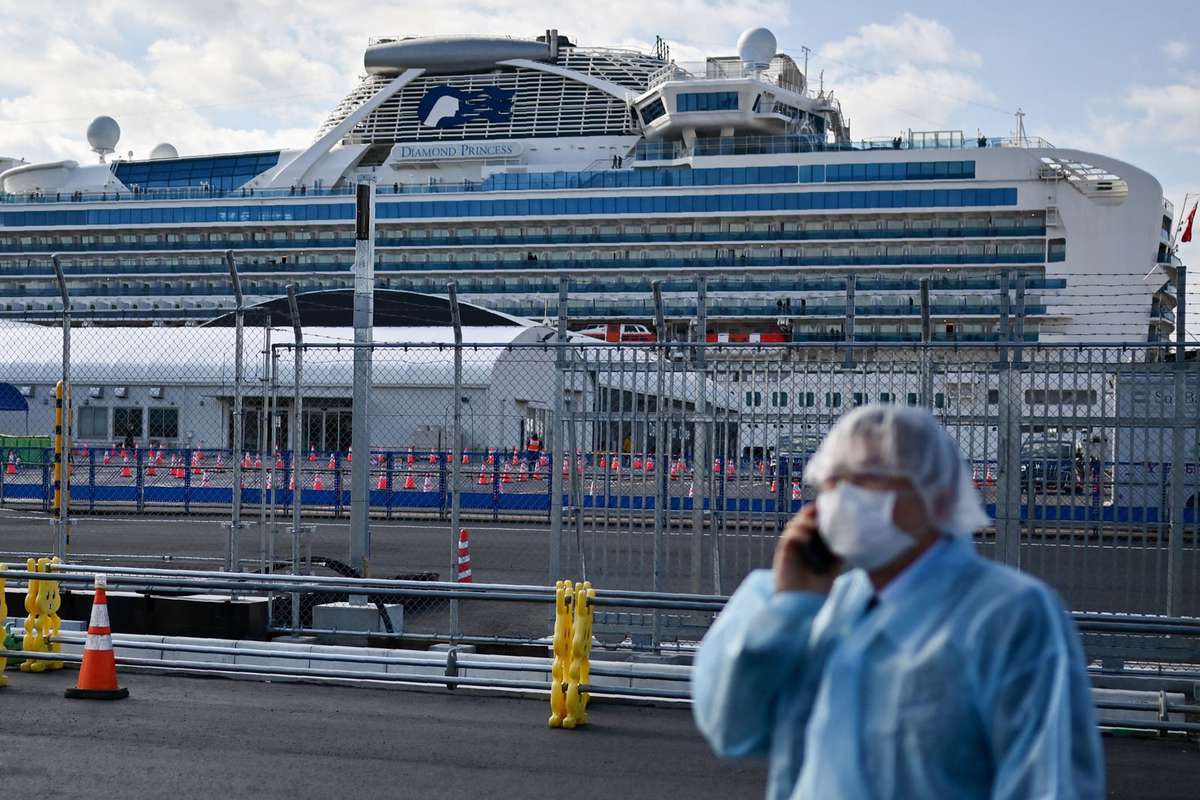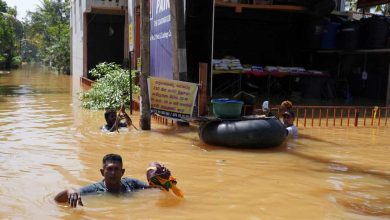TRAVELING ABROAD? BE CORONAVIRUS READY.
Everything You Need to Know If You’re Traveling During the Coronavirus Outbreak (Video)
Since reports of the coronavirus surfaced in late December, more than 83,000 people have been infected and nearly 3,000 people have died around the world. As the virus has continued to have global impact, the U.S. government has established travel advisories, leading to flights and cruises canceling their routes.
Cities in China — specifically Wuhan, capital of the Hubei province, where the virus originated — have been under quarantine and the first death in the United States was confirmed on Saturday Feb. 29.
Here is everything you need to know about traveling right now.
What is coronavirus?
Coronavirus was first discovered in December 2019 in Wuhan, Hubei Province, China. The World Health Organization announced on Feb. 12 that the official name for the specific strain of coronavirus is Covid-19.
“Coronaviruses are a large family of viruses, some causing illness in people and others that circulate among animals, including camels, cats, and bats,” according to the Center for Disease Control (CDC).
Both Middle Eastern Respiratory Syndrome (MERS) and Severe Acute Respiratory Syndrome (SARS) are caused by a coronavirus, but not the strain that’s currently circulating.
The doctor who first discovered this strain of coronavirus and alerted authorities, Li Wenliang, died at age 34 of the disease on Feb. 7. China quickly launched an investigation into his death, according to a statement released by the official Xinhua news agency.
“We express our deep condolences and sadness, pay our tribute to him for fighting on the front line against the epidemic, and show our sincere sympathy to his family,” government reps said in the statement.
What are the symptoms of coronavirus?
The first symptoms of Coronavirus feel a lot like the flu. “You’ll get a fever, cough — it’s primarily a lower respiratory virus — general malaise, there may be some gastrointestinal distress,” Dr. Rebecca Katz, a professor and the director of the Center for Global Health Science and Security at Georgetown University, recently told Travel + Leisure. When complications of the virus occur, patients could develop pneumonia or kidney-related issues, which could lead to death.
What should you do to prevent coronavirus?
You can protect yourself from catching coronavirus the same way you’d protect yourself from catching any other virus. General flu hygiene practices including washing your hands regularly and covering your mouth and nose when you cough or sneeze are simple ways to keep healthy. Also avoid close contact with people you may see coughing or sneezing.
When eating, be sure to thoroughly cook all meat and eggs.
Professors from Johns Hopkins University have developed a real-time map to track confirmed cases of coronavirus as it spreads. The numbers of confirmed cases and deaths below are a part of the WHO’s report, with information as recent as Feb. 27, unless otherwise noted.
China:
The overwhelming majority of coronavirus cases are within mainland China, with over 78,000 cases confirmed and 2,747 having died.
The city of Wuhan has been completely quarantined from the rest of China, with transportation links cut. Streets and shelves are empty as residents are urged to go outside only for essential supplies. There have also been two makeshift hospitals put in place to accommodate all patients.
While museums are closed until further notice, China’s National Cultural Heritage Administration has put much of its collection online for visitors to peruse.
Macau has completely shut down for two weeks and none of its famous casinos will be open.
There are seven cases of coronavirus confirmed in Hong Kong.
Elsewhere in Asia:
South Korea has had the biggest outbreak outside of China with 2,337 cases according to Reuters. Sixteen people have died since the first case was confirmed on Jan. 20.
In Japan there are 186 confirmed cases with three deaths. In what became a major story surrounding the outbreak, a majority of their confirmed cases were on the Diamond Princess cruise ship that was recently quarantined while being docked in the Yokohama port. Four passengers, who were taken off the ship and hospitalized, have passed away. They were all above 80 years old. Japan officials also decided to close schools amid the outbreak.
Related: Tokyo Disneyland Closes Due to Coronavirus Just One Day After Japan Shut Down All Schools
Taiwan reported its first death on Feb. 16. According to its health minister via Reuters, he was a 61-year-old taxi driver who regularly drove clients from Hong Kong, Macau, and mainland China. He also had a relative who was confirmed to have coronavirus. Over 2,ooo people in Taiwan are confirmed to have coronavirus.
The country has banned entry to Chinese visitors and foreigners with a recent history of travel to China and suspended most flights. Those who have an urgent need to travel to Taiwan must appear at a consulate in their city and prove that they have not been to mainland China within the past 14 days. Those who have visited and were already granted visas are instructed to self-impose a quarantine; failure to do so is punishable by an almost $5,000 fine. Taiwan has also banned all cruise ships from docking at its ports.
Thailand also has 40 confirmed cases.
The United States:
The first death to due coronavirus in the United States was confirmed on Feb. 29 in Washington state, the Washington State Department of Health confirmed on Twitter. During a White House Press conference it was confirmed that the late individual was female.
Following the first U.S.-based death, the Trump Administration asked the State Department to increase their travel advisory to infected parts of Italy and South Korea to a Level 4; “Do Not Travel.”
This week possible cases of the virus emerged in California, Oregon and Washington State.
Authorities told to The Associated Press, that the patients include an older Northern California woman with chronic health conditions, a high school student in Everett, Washington and an employee at a Portland, Oregon-area school. The patients have not traveled to and affected area or have been in contact with anyone infected.
San Francisco’s mayor has declared a state of emergency for the city. While zero cases of the disease have originated in San Francisco so far, three people have been treated at local hospitals for COVID-19, according to The San Francisco Chronicle.
The CDC reported this week confirming that California’s first case, confirmed on Wednesday, could possibly be the first instance of “community spread” of the virus which means, “spread of an illness for which the source of infection is unknown.”
“At this time, the patient’s exposure is unknown … however, the patient may have been exposed to a returned traveler who was infected,” the CDC explained this week.
The latest World Health Organization report confirms fifty-nine cases of coronavirus have been confirmed in the U.S.
Amid the outbreak, airports around the country, including JFK and LAX, have rerouted passengers coming in from China to screening centers. If passengers show no symptoms during their enhanced screening, they are rebooked to their final destination — although they are asked to self-quarantine for 14 days.
Europe:
Italy has a confirmed 400 cases and 12 deaths as of this week. The scare prompted Venice’s Carnivale to end early as well as adjustments in how shows were viewed during Milan Fashion Week.
Elsewhere in the EU, France is the only other country to report one death due to the virus with 12 confirmed cases. Other countries that been affected by the virus include Germany with 16 cases and Spain with two.
United Kingdom:
The United Kingdom has 19 confirmed cases and one confirmed death. The late individual was a passengers on the quarantined Diamond Princess cruise ship, according to The Guardian.
Brazil:
In what is Latin America’s first case of coronavirus, a man traveling home from Italy to Brazil has been diagnosed, according to Brazil’s health ministry, per CBS News. He is 61 and returned to Brazil on Feb. 21 from the Lombardo region of Italy.
Australia:
Australia’s Department of Health has an ongoing “active” warning in regards to coronavirus with strict travel restrictions to China. According to Smart Traveler, a government-run advice website, Australia is also advising residents to “exercise a high degree of caution” in Northern Italy. The country has a confirmed 22 cases, 15 of which were traced to Wuhan, China. Zero people have died.
On Christmas, in the beginning of the outbreak, Australia evacuated 243 citizens who wished to leave Wuhan and transferred them to quarantine in an immigration detention center, according to The New York Times.
How are airlines responding?
Airlines around the world have halted service to mainland China amid warnings from the World Health Organization.
Most recently, JetBlue announced they are suspending change and cancel fees for all new flight bookings made between February 27, 2020 and March 11, 2020 for travel through June 1, 2020.
Delta announced they have also reduced the number of weekly flights between the United States and South Korea.
In a statement, Lufthansa Group (including Austrian Airlines and SWISS) said they will not accept new bookings to China through the end of February, however the airlines will continue to operate flights to Hong Kong. British Airways announced an “immediate” suspension of flights to mainland China.
British Airways also announced they were reducing flights to Milan following the outbreak there. The British airline usually flies to Milan eight times a day, according to Reuters. The airline said they would contact customers to make accomodations for the change.
Air Canada has also temporarily suspended flights to Beijing and Shanghai.
United, American, and Delta have all suspended their service to China, citing low demand. The longest of these cancellations is with Delta, who have suspended mainland China service until April 30.
All airlines will continue to monitor the situation and could change their schedules should there be any change in the situation in China. Many airlines are still operating flights to Hong Kong. Travelers should contact their airline directly for more information.
Airlines are also looking out for their employees as flight attendants on Cathay Pacific were first told to wear masks while working and have now been asked to take three weeks of unpaid leave between March 1 and the end of June, due to a “significant” drop in demand for flights.
Thai Airways is practicing extreme precautions as they are spraying down cabins with a disinfectant after each flight.
How are cruise lines responding?
Cruise Lines International Association, whose members include many international cruise lines, said in a statement that its members “have suspended crew movements from mainland China and will deny boarding to any individual, whether guest or crew, who has traveled from or through mainland China within the previous 14 days.”
While cruise lines have released their own safety regulations regarding how they’re handling the outbreak, isolated incidents have occurred on various ships.
The Diamond Princess ship in Japan that was quarantined from Feb. 1 to Feb. 15 in a port near Tokyo had 634 cases on board. Quarantined passengers in critical condition were removed from the ship and hospitalized, including the four passengers who died. The ship, which was carrying about 3,700 people, started their process to disembark last week.
Another cruise ship that was under quarantine earlier this month was Holland America’s Westerdam ship that left Hong Kong on Feb. 1. It was denied disembarkment in the Philippines, Taiwan, Japan, Guam, and Thailand. The cruise ship always asserted that its 1,455 passengers and 802 crew members on board were healthy. Passengers aboard the cruise ship Westerdam who have returned to the United States no longer need to isolate themselves and can resume normal activities, according to the CDC, per The New York Times.
On Feb. 10, a Royal Caribbean cruise docked in Bayonne, N.J. — 20 miles away from New York City — with passengers that will be assessed for coronavirus as they deboard. On Monday the cruise left the port after four passengers suspected to have coronavirus tested negative, according to CNN.
For future cruise plans to China, the managing editor of Cruise Critic recently told T+L, “It’s best to contact your cruise line or travel advisor directly with any questions or concerns. All cruise lines that have canceled cruises are offering affected guests the option to receive a full refund.”
Should I cancel my trip because of the coronavirus outbreak?
Earlier this week, the U.S. State Department issued a level 4 — its highest level — warning, notifying Americans that they should not travel to China. The CDC also issued a warning against all nonessential travel to China. However, this does not include Hong Kong, Macau, or Taiwan.
Travel warnings for Italy and South Korea were increased from a Level 3 to a Level 4 on Saturday, advising Americans to not travel to infected areas.
To feel secure about any upcoming travel plans, communicate with your hotel and airline directly, and monitor updates and alerts for the current information in your destination.
More Coronavirus Travel Advisory Information
What Travelers Need to Know About the Coronavirus, According to a Doctor and Public Health Expert
This Map Shows Where the Coronavirus Is Spreading in Real Time
Hilton Temporarily Closes 150 Hotels in China Due to Coronavirus
Airbnb Suspended Bookings in Beijing Until May Due to the Coronavirus Outbreak
China Is Putting Museum Exhibits Online Due to Coronavirus Outbreak










